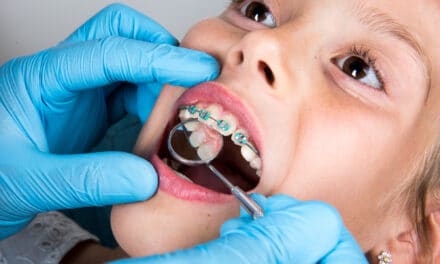The critical roll referrals play in determining an orthodontic practice’s success and the statistics you should be tracking
By Roger P. Levin, DDS
Orthodontic practices live and die by referrals. During the COVID-19 pandemic I have been giving three to five webinars per week to help the profession in any way I can. In most of these online meetings I make the point that the single most important factor in the recovery from COVID-19, and for orthodontic practice success during more normal times, is one factor—production.
Although there are many contributing factors to orthodontic practice success, no other has as high a priority as production. So why am I talking about production in an article where I start off talking about referrals? Because referrals in essence represent production. And in every practice, there’s a simple formula that needs to be examined, analyzed, and regularly scrutinized. This formula asks:
- How many calls for potential new patient appointments are there each month and year?
- How many of those callers schedule appointments each month and year?
- And how many of those scheduled new patients actually show up? How many of those who show up accept treatment in a reasonable period of time?
- How many of those who accept treatment needed time to make a decision before agreeing to start?
- How much production did starts represent each month and year?
These are critical statistics that comprise a formula used at Levin Group. It points out that referrals are production although there is a diminishing result from the first phone call until the patient decides whether to start.
Let’s break these questions down one at a time.

1. The first phone call is critical.
As the old saying goes: You only get one chance to make a great first impression. The new patient phone call is that first impression and it often determines whether the patient schedules and shows up. Every orthodontic practice should develop specific scripts for the first new patient phone call. The scripting should be extremely positive, contain power words to create energy (eg, great, wonderful, or terrific), be complimentary to the referring doctor, look for commonalities to help build a relationship, and promote the value of the treatment coordinator, doctor, and practice. So essentially, the first phone call must focus on customer service as much as getting the patient scheduled. This goes a long way toward advancing the relationship and setting up the TC for case acceptance. Take time to study the nuances of creating a psychologically crafted script and keep asking how you would respond to what’s being said to the patient in the scripting you develop.
2. If the first new patient phone call is positive, then the TC should confirm the patient appointment.
This is an opportunity for the TC to introduce themselves to the patient and spend a few minutes getting to know them and advancing the relationship before the patient ever comes in. Building relationships is one of the most powerful ways to ensure that a patient will keep the new patient appointment and it tremendously increases the odds of creating a start.
3. It’s critical to regularly measure how many patients reject treatment, accept treatment, and delay treatment.
If the patient says “yes” they have made it easy, but it still means that the process should continually be reviewed and improved. If you received too many “no’s” you must go back and examine every step of the new patient appointment process because new patients represent production and production is critical to orthodontic practice success. Patients who don’t commit that day may have made other appointments for orthodontic consultation, need to check with their work schedules or spouses, or need to look at finances. To combat this, smart orthodontic practices develop standardized and regimented follow-up systems that build on the relationship created in the first phone call and TC appointment. It’s essential in both the first phone call and the TC appointment to talk about the excellence of the doctor, the role of the practice in the community, how much fun kids have in the practice, and the excellent cosmetic results for both children and adults.
4. Understanding that consumer needs and wants change constantly is essential.
In a slower economy people are more interested in a wide variety of financial options including longer-term payment plans or patient financing. Patient financing is now essential as many patients either can’t afford a down payment or can’t handle the monthly payments. And keep in mind that patients won’t tell you. They’ll just go somewhere else. You can help keep up with patients’ mindsets by watching trends with consumers. What are patients asking for? Are they asking for longer payment plans? Are they asking for discounts? Are they asking if the practice participates with their insurance? The questions will point to how consumers are thinking and what changes need to be evaluated to remain current and relevant as an orthodontic practice.
5. You must look for the deficiencies. Are patients calling and not scheduling?
Are they not showing up for the new patient consult appointment? Are they not accepting treatment? Create a formula for your practice using what is currently happening today as a baseline and then try to “beat the control.” Beat the control means that you try to keep doing better than the “control” which is the current state of the practice today. Many orthodontic practices will be surprised to find out that they are getting worse in some areas as consumers begin to change, the economy isn’t robust, or there are other less expensive options. In order to remain relevant, it will be essential to break down these formulas and understand current practice performance.
Production is the single most important factor in the orthodontic practice and starts are essentially production. This makes sense because there is a direct proportional relationship between starts and production. Given that starts are so important, you should know how many new patients are calling, how many schedule, how many show up, how many accept treatment, and how many need follow-up. This will help you create a deep dive into understanding your practice and knowing what needs to be addressed to improve performance. OP

Roger P. Levin, DDS, is the CEO and founder of Levin Group, a leading practice management consulting firm that has worked with over 30,000 practices to increase production. A recognized expert on orthodontic practice management and marketing, he has written 67 books and over 4,000 articles and regularly presents seminars in the U.S. and around the world. To contact Levin or to join the 40,000 dental professionals who receive his Ortho Practice Production Tip of the Day, visit levingroup.com or email [email protected].










